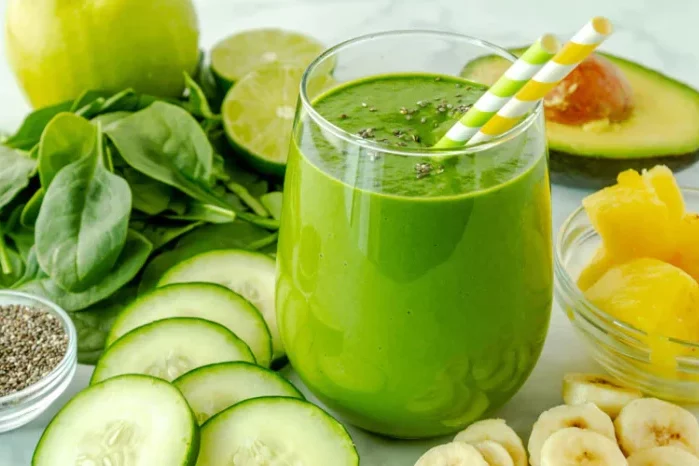In the world of nutrition and healthy living, the concept of a varied diet stands as a cornerstone. A varied diet is not simply about eating different foods for the sake of variety; it is a strategic approach to consuming a wide range of nutrients, flavors, and textures that together contribute to our overall well-being. It encompasses everything from the colorful fruits and vegetables that grace our plates to the diverse proteins, healthy fats, and complex carbohydrates that fuel our bodies. In this comprehensive essay, we will explore what exactly a varied diet entails, its numerous benefits, how to achieve it in daily life, the cultural and historical aspects that have influenced dietary variety, and the role it plays in preventing diseases and promoting longevity.
Boosted Immune System
Antioxidants and Immune Function: Fruits and vegetables are a rich source of antioxidants such as vitamins C, E, and beta-carotene, as well as polyphenols like flavonoids and carotenoids. These antioxidants help protect our cells from oxidative damage caused by free radicals, which are unstable molecules that can impair the immune system. For example, vitamin C is known to enhance the function of white blood cells, the body’s defense against infections. Berries, with their high antioxidant content, have been studied for their potential to boost the immune system and reduce the risk of chronic diseases. By consuming a wide variety of colorful fruits and vegetables as part of a varied diet, we supply our body with a continuous stream of these immune-boosting compounds.
Protein and Antibodies: Adequate protein intake is essential for the production of antibodies, which are proteins that the immune system uses to identify and neutralize foreign invaders like bacteria and viruses. Different proteins from sources such as meat, fish, dairy, beans, and nuts provide the necessary amino acids in varying combinations. A varied diet ensures that we have access to all the essential amino acids required for the synthesis of these crucial immune components, strengthening our body’s ability to fight off diseases.
Better Weight Management
Satiety and Calorie Control: A varied diet can help with weight management in several ways. First, consuming a diverse range of foods can increase satiety. For example, a meal that includes a combination of lean protein (like grilled chicken), complex carbohydrates (such as brown rice), and a variety of vegetables (like a colorful salad) will keep you fuller for longer compared to a meal of just one or two items. The fiber in fruits, vegetables, and whole grains also adds to the feeling of fullness, reducing the likelihood of overeating or snacking between meals. Additionally, when we have a wide selection of healthy foods to choose from, we are less likely to turn to high-calorie, processed options that can contribute to weight gain.
Metabolic Benefits: Different foods can have varying effects on our metabolism. For instance, the thermic effect of food (the energy our body expends to digest, absorb, and metabolize nutrients) is higher for proteins compared to carbohydrates and fats. By including a variety of proteins in our diet, we can slightly increase our overall energy expenditure during digestion. Moreover, the complex carbohydrates and healthy fats in a varied diet help maintain stable blood sugar levels and provide a steady source of energy, which can prevent energy crashes that might lead to excessive calorie consumption.
Grocery Shopping Tips
Explore Different Sections: When grocery shopping, don’t just stick to the familiar aisles. Wander through the produce section and pick up fruits and vegetables you’ve never tried before. Look for exotic or seasonal items that can add new flavors and nutrients to your diet. Visit the whole grains section and choose from a variety of options like quinoa, barley, or farro instead of always reaching for the same type of rice or bread. Check out the canned and frozen food aisles as well, as they can offer convenient ways to incorporate a variety of fruits, vegetables, and beans into your diet when fresh isn’t available.
Read Labels: Pay attention to food labels to understand the ingredients and nutritional content of the products you’re buying. Look for items that are minimally processed and have a diverse list of ingredients. For example, when choosing a jar of pasta sauce, opt for one that contains a variety of tomatoes, onions, garlic, and perhaps some added vegetables or herbs rather than a sauce with a long list of artificial additives and high amounts of added sugar or salt. This way, you can ensure that the foods you bring home contribute to a varied and healthy diet.
Buy in Season: Buying fruits and vegetables in season not only ensures better flavor but also increases the variety in your diet. Seasonal produce is usually fresher and more readily available at a lower cost. In the spring, you might enjoy asparagus, strawberries, and peas. Summer brings a bounty of tomatoes, corn, watermelons, and berries. Fall offers apples, pumpkins, and root vegetables, while winter is a great time for citrus fruits, kale, and Brussels sprouts. Incorporating these seasonal gems into your meals can make your diet more diverse and enjoyable.
Incorporating Different Cuisines
International Flavors: Exploring different cuisines is an excellent way to add variety to your diet. Try cooking a Mexican-inspired meal one night with dishes like black bean and corn salad, chicken or vegetarian enchiladas with lots of tomatoes, onions, and peppers, and a side of brown rice. Another evening, go for an Asian theme with a stir-fry using lots of colorful vegetables, lean protein like shrimp or tofu, and a sauce made with soy sauce, ginger, and garlic, served over whole wheat noodles or brown rice. Italian cuisine offers options like whole wheat pasta with lots of fresh tomatoes, spinach, and lean meatballs or a vegetarian pizza with a variety of vegetables on a whole wheat crust. Each cuisine has its own unique combination of ingredients, spices, and cooking methods that can expand your palate and the variety of foods you consume.
Fusion Cooking: Combine elements of different cuisines to create exciting and novel dishes. For example, you could make a fusion salad with a base of mixed greens, add grilled chicken marinated in a blend of Asian spices, top it with slices of avocado and mango (a combination inspired by both Latin American and Southeast Asian cuisines), and dress it with a vinaigrette made with olive oil, lime juice, and a touch of honey. Fusion cooking allows you to be creative in the kitchen while introducing new flavors and textures to your diet.
Conclusion
In conclusion, a varied diet is a cornerstone of healthy eating that emphasizes the consumption of a wide range of different foods to ensure the body receives a balanced and adequate intake of all essential nutrients. By incorporating a diverse array of fruits, vegetables, grains, proteins, and dairy products into the diet, individuals can meet their daily nutritional needs and promote overall health and well-being.
Related Topics:






















